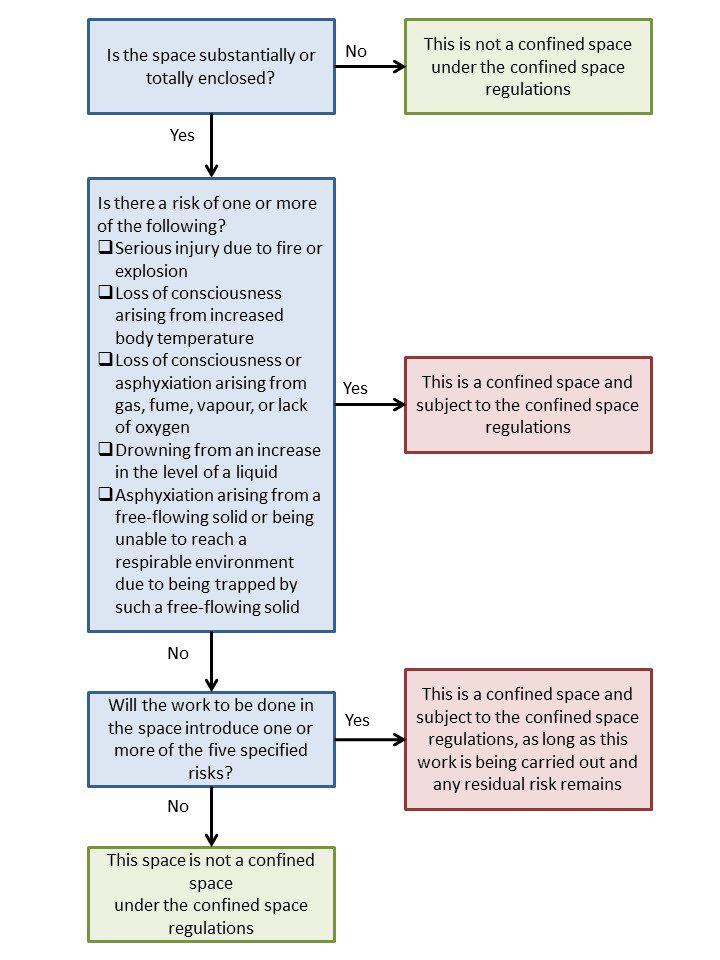Some confined spaces are fairly easy to identify, for example most sewers and closed tanks used to store chemicals. However, identification may not always be simple, as the space may be enclosed but not have one of the five risks and may not be:
- Enclosed on all sides such; some vats, silos and vessel holds may have open tops or sides
- Small or difficult to work in: some grain silos and vessel holds can be very large
- Difficult to get in or out of; some have several entrances or exits, others have quite large openings or are apparently easy to escape from
- A place where people do not regularly work; some confined spaces, such as those used for spray painting in vehicle repair centres are used regularly by people in the course of their work
The Confined Spaces Regulations and the Confined Spaces Regulations (Northern Ireland) contain the following key duties:
- Avoid entry to confined spaces, for example, by doing the work from the outside
- If entry to a confined space is unavoidable, risk assess and follow a safe system of work
- Put in place adequate emergency arrangements before the work starts

It is very important to recognise that some locations that are not considered confined spaces in normal use will become, and must be treated as, confined spaces should conditions worsen. These include:
- Vessel compartments
- Basements
- Tunnels
Not all enclosed workplaces are deemed confined spaces; an enclosed workplace without a ‘specified risk’ is not a confined space even where there are other risks due to the size or difficulty of working in it. In ceiling voids, lofts and some cellars, if the space is cramped you may need to consider other hazards, such as poor manual handling, or how personnel would be evacuated if they had a fall or injury.
Enclosed spaces will require risk assessing, incident commander should consider using the control measures associated with confined spaces and other relevant control measures such as manual handling techniques.
If the confined space is in an industrial context, the responsible person or on-site staff should be able to provide details about it to personnel on arrival at the incident. It may be beneficial to identify potential confined spaces through joint on-site training.
